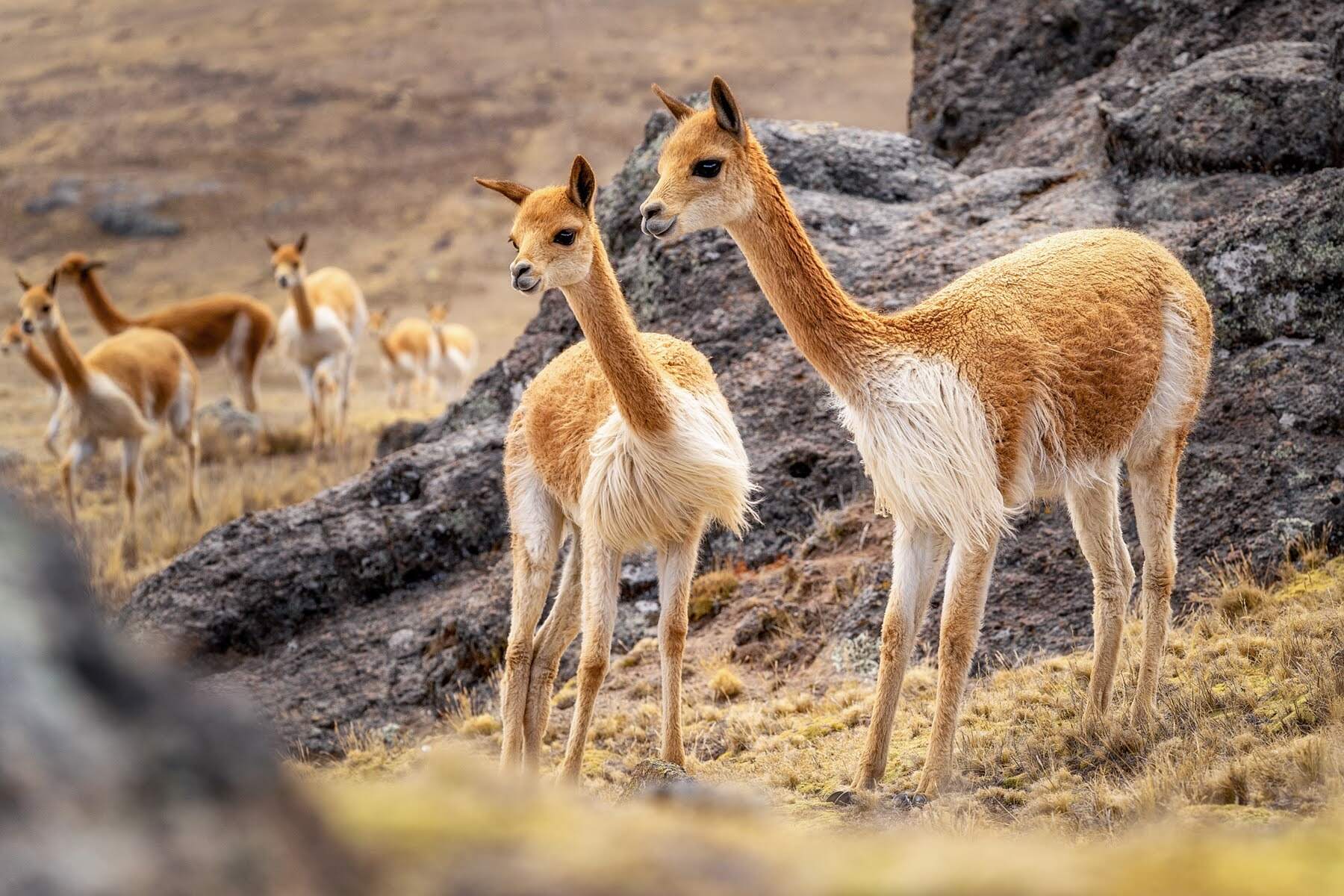
What is a vicuña? A vicuña is a small, graceful animal native to the high Andes of South America. Known for its incredibly soft and luxurious wool, vicuñas are closely related to llamas and alpacas. These animals are often found at altitudes between 3,200 and 4,800 meters, where they graze on grasses and other vegetation. Vicuñas have a slender body, long neck, and large eyes, making them well-adapted to their harsh, mountainous environment. Their wool is highly prized and was once reserved for Incan royalty. Today, vicuñas are protected by law due to their near-extinction in the 1960s. Conservation efforts have helped their population recover, but they remain a symbol of elegance and resilience in the wild.
What is a Vicuña?
Vicuñas are fascinating creatures native to South America. They belong to the camelid family, which includes llamas, alpacas, and guanacos. These animals are known for their incredibly soft and valuable wool. Let's dive into some intriguing facts about these unique animals.
Physical Characteristics
Vicuñas have distinct features that make them stand out in the animal kingdom.
- Vicuñas are the smallest members of the camelid family, standing about 3 feet tall at the shoulder.
- Their wool is considered the finest and softest in the world, with fibers measuring just 12 microns in diameter.
- They have a sleek, slender body covered in a light brown coat with a white underbelly.
- Unlike their camelid relatives, vicuñas have large, expressive eyes that help them spot predators from a distance.
- Their long necks and legs are adapted for running swiftly across the rugged Andean terrain.
Habitat and Range
These animals are well-adapted to their harsh environment.
- Vicuñas are found primarily in the high-altitude regions of the Andes Mountains, ranging from Peru to Argentina.
- They thrive at elevations between 10,000 and 16,000 feet, where temperatures can drop below freezing.
- Their natural habitat includes grasslands, scrublands, and rocky slopes.
- Vicuñas have a unique adaptation that allows them to survive in low-oxygen environments: an increased number of red blood cells.
- They often form small family groups consisting of a dominant male, several females, and their offspring.
Diet and Feeding Habits
Vicuñas have specific dietary preferences that sustain them in their environment.
- They are herbivores, primarily grazing on grasses, herbs, and shrubs.
- Vicuñas have a specialized digestive system that allows them to extract maximum nutrients from their food.
- They are known to chew cud, similar to cows, which aids in their digestion.
- During the dry season, they can survive on sparse vegetation and moisture from morning dew.
- Vicuñas often feed during the early morning and late afternoon to avoid the harsh midday sun.
Social Structure and Behavior
Understanding their social dynamics provides insight into their survival strategies.
- Vicuñas are highly social animals, living in groups called "family bands."
- The dominant male is responsible for defending the territory and protecting the group from predators.
- Female vicuñas are typically the primary caregivers for the young, known as "crias."
- Vicuñas communicate through a series of vocalizations, including whistles and hums.
- They also use body language, such as ear positioning and tail movements, to convey messages.
Conservation Status
Efforts to protect vicuñas have been crucial for their survival.
- Vicuñas were once hunted nearly to extinction for their valuable wool.
- In the 1960s, their population dwindled to just a few thousand individuals.
- Conservation efforts, including legal protection and sustainable shearing practices, have helped their numbers rebound.
- Today, vicuñas are classified as "Least Concern" by the International Union for Conservation of Nature (IUCN).
- Despite their improved status, they still face threats from habitat loss and illegal poaching.
Economic and Cultural Significance
Vicuñas hold a special place in the hearts of Andean communities.
- Their wool, known as "vicuña fleece," is highly prized and can fetch thousands of dollars per kilogram.
- Traditional shearing ceremonies, called "chaccu," are held annually to harvest vicuña wool without harming the animals.
- Vicuñas have been depicted in ancient Andean art and folklore for centuries.
- They are considered a symbol of purity and elegance in many South American cultures.
- The sustainable management of vicuña populations provides economic benefits to local communities through eco-tourism and wool sales.
Fun and Lesser-Known Facts
Here are some quirky tidbits about these captivating creatures.
- Vicuñas can run at speeds of up to 30 miles per hour to escape predators.
The Fascinating World of Vicuñas
Vicuñas are truly remarkable creatures. From their luxurious wool to their unique social structures, these animals captivate anyone who learns about them. Found in the Andes Mountains, they thrive in harsh environments, showcasing their resilience. Their wool, once reserved for Incan royalty, remains one of the most valuable fibers today. Conservation efforts have been crucial in bringing their population back from the brink of extinction.
Understanding vicuñas helps us appreciate the delicate balance of nature and the importance of preserving it. Their story is a testament to the power of conservation and the beauty of biodiversity. Next time you think about the Andes, remember the vicuñas and their incredible journey. They’re not just animals; they’re symbols of survival and elegance in the wild.
Was this page helpful?
Our commitment to delivering trustworthy and engaging content is at the heart of what we do. Each fact on our site is contributed by real users like you, bringing a wealth of diverse insights and information. To ensure the highest standards of accuracy and reliability, our dedicated editors meticulously review each submission. This process guarantees that the facts we share are not only fascinating but also credible. Trust in our commitment to quality and authenticity as you explore and learn with us.
